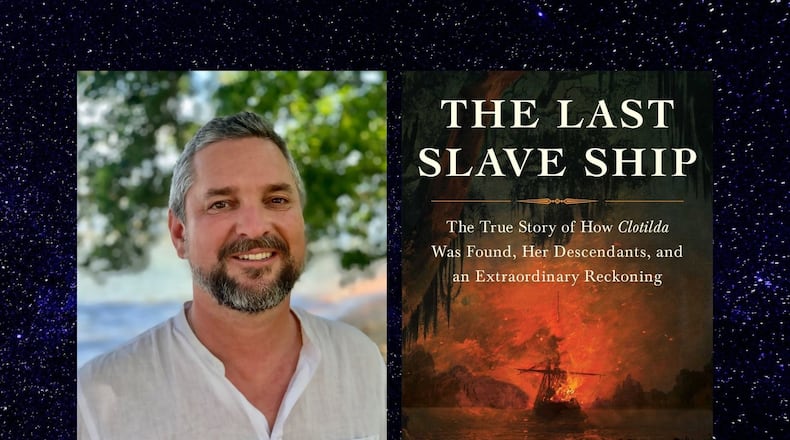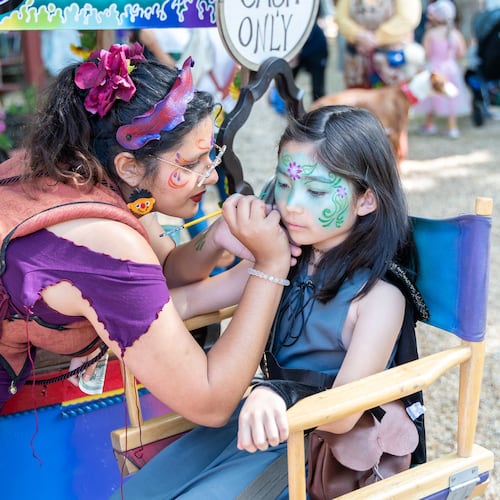The story of the Clotilda and its human cargo began with a boast, and then with a bet: In the spring of 1860, Alabama plantation owner and steamboat captain Timothy Meaher, bragged to dinner guests that he could smuggle human contraband from Africa into America, flouting the 1807 import ban that dissolved the transatlantic slave trade. His wager was $1,000. His vessel of subterfuge: the Clotilda.
On May 24, 1860, the Clotilda departed from the modern-day West African country of Benin with 110 and sailed back to Mobile, Alabama. Its imprisoned inhabitants would never see their homeland again. Among them was Kassoula, who eventually took on the moniker Cudjo Lewis and was immortalized in Zora Neale Hurston’s book “Barracoon.” In his interviews with Hurston, he detailed slave raids as well as the harrowing ordeal known as Middle Passage.
Ben Raines, the author of “The Last Slave Ship,” draws upon Hurston’s interviews with Lewis, as well as a bevy of other first-person accounts of the enslaved, to put together a multidimensional exploration of the Clotilda, its bad actors and the descendants of the survivors.
Raines’ retelling spends time humanizing people that were often seen as outliers because of their facial tattoos and other proclivities that marked them as being “other” in a world that struggled with anything beyond nuance. “Everyone and everything seemed so strange to the Africans. They tried to talk to the American-born Black people they encountered on the plantations, but couldn’t bridge the language gap. Often the Americans made fun of the Africans, even one hundred years later.”
From shell-paved roads to groves of magnolias and orange trees, one of the strengths of the book is the well-described landscape. Raines, an environmental journalist with knowledge of Alabama’s swamps, deltas and hideaways, writes about one of the first landscapes the enslaved encountered in the swamps of Alabama. “(T)he shores are lined with a thick and marshy strand of bulrushes, wild rice and cattails, chest-high and difficult to walk through. Hanging overhead, cypress and tupelo trees drip with stalactites of Spanish moss. The big moon would have made for eerie silhouettes that night, coal-black against its brightness.”
Raines doesn’t get to deploy this type of scene setting often, but when he does, the narrative is tethered to the landscape, and the book flourishes under his pen in these moments.
Early on Raines walks the well-tread path of storytellers and historians before him, but most of their narratives stop in the 1950s and focus on the time before and during enslavement. This later period is where “The Last Slave Ship” adds new fuel to the conversation about the history of slavery, the search for the Clotilda and reconciliation.
With his deep knowledge of the region’s waterways (his first book, “Saving America’s Amazon” is about is the most biodiverse ecosystem in the country, Alabama’s Tensaw Delta), Raines takes it upon himself to search for the sunken vessel. The pace accelerates when he enters the story, and he doesn’t shy away from the emotions even when they’re hard to swallow. The decoy narratives purported by the Clotilda’s captain and the dead-end planted by community members meant to throw Raines off track will frustrate readers, just as they frustrated him. He recounts the humiliation he feels when he finds a ship and declares it the Clotilda, only to realize later it is not. The real vessel is unearthed about a year later, and Raines, clad in a diving suit, is the man in the water pulling up lumber with 19th century nails still embedded in it.
It isn’t just Raines’ modern-day quest to find the ship that sets his book apart from the others. The author also chronicles the continued systematic demise of the once thriving community founded by Clotilda survivors after the Civil War — Africatown, Alabama. In 1928, Meaher’s grandson leased 100 acres of the land around Africatown to International Paper Company, which built its headquarters right next to the residents. Still the largest landowner in Africatown, the Meaher family allowed papermills, lumbermills, shipyards and an aluminum plant to surround the community. What land they couldn’t attain by intimidation, they allowed industries to seize using eminent domain. The municipality was denied electricity and running water until the 1960′s. And in 1991, a five-lane highway was built right through the heart of the community, destroying historic buildings.
“Closure is elusive,” Raines writes toward the end of “The Last Slave Ship.” No one was convicted for the Clotilda’s illegal slaving run, and by the time Raines is ready to close this chapter on the ship, only two of the three parties involved are willing to come to the table to talk about the event that bound their ancestors together. The descendants of the enslaved are finally able to embrace their history, and ambassadors of Benin have asked forgiveness for its role in the travesty. But the Meaher family is silent on their ancestor’s crimes when they aren’t outright complicit in continuing to hide evidence.
“The Clotilda story resonates because it is the origin story of the African diaspora globally,” Raines writes. “We know of the lifelong sense of loss the survivors felt, of the rich cultures they came from, the horrific fates that befell their African families left behind.”
Because of the continued reverberations of slavery, white supremacy and racism that still plague Black life and grip the country, “The Last Slave Ship” is an important, weighty, timely read.
NONFICTION
By Ben Raines
Simon & Schuster
303 pages, $27.99
About the Author
The Latest
Featured


